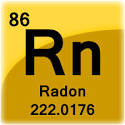Radon Testing Closed House Conditions-What the heck??
Written By Tom
Published on 04/25/2016 9:00 AM
 When testing for radon, what exactly are “closed house conditions” anyway? Since the dawn of radon testing in my world we, as a NYS ELAP Certified Radon Testing Laboratory have been performing radon tests in houses. And even before that time right up through today, the same confusion permeates our society over what conditions a house actually needs to be maintained under in order to properly conduct such a test. What exactly are the rules for performing a radon test?? Well, I’m from the government and I’m here to help!
When testing for radon, what exactly are “closed house conditions” anyway? Since the dawn of radon testing in my world we, as a NYS ELAP Certified Radon Testing Laboratory have been performing radon tests in houses. And even before that time right up through today, the same confusion permeates our society over what conditions a house actually needs to be maintained under in order to properly conduct such a test. What exactly are the rules for performing a radon test?? Well, I’m from the government and I’m here to help!

Radon Canisters
The EPA has long-since established guidelines for radon testing and how these tests are to be performed. Whether by a certified laboratory using electronic equipment such as ours; by a canister-toting home inspector, or by Joe and Sally Homeowner using a Big Box store kit, all radon tests should be executed following the same guidelines. These guidelines are as follows:
 All windows and exterior doors must be closed 12 hours prior to the test placement and remain closed at all times except for momentary entry and exit. (No, not “just the basement windows”, the exterior doors and windows throughout the WHOLE house!) If any windows are open when we arrive for placement, expect that the test will be extended by 12 hours minimum. As for the interior doors (bedroom, bathroom,etc.) it doesn’t matter; open or closed is fine, as these doors are located within the envelope of the house. Opening a window “just for a minute” is not permitted either. Sorry!
All windows and exterior doors must be closed 12 hours prior to the test placement and remain closed at all times except for momentary entry and exit. (No, not “just the basement windows”, the exterior doors and windows throughout the WHOLE house!) If any windows are open when we arrive for placement, expect that the test will be extended by 12 hours minimum. As for the interior doors (bedroom, bathroom,etc.) it doesn’t matter; open or closed is fine, as these doors are located within the envelope of the house. Opening a window “just for a minute” is not permitted either. Sorry!- External-internal air exchange systems such as attic & window fans cannot be operated.
- Fans that are part of a radon-reduction system or small exhaust fans operating for only short periods of time (such as bathroom fans) may run during the test. (Sidebar: Radon-reduction systems, when present, should be operating 24/7)
- Air conditioners that are not exchanging outside air are permitted. Central A/C systems are permitted to run. (Having been chased out of my share of houses for telling occupants to close their windows, you can imagine we testers don’t win the hearts and minds of the masses in mid- July if they don’t have air conditioning. It’s a heavy burden we testers carry…)
 Fireplaces should not be used. You may use wood stoves providing the stove doors are closed.
Fireplaces should not be used. You may use wood stoves providing the stove doors are closed.- The use of aerosols (hairspray, air fresheners, etc.) in the area being tested should be avoided.
- The testing apparatus must not be moved or disturbed in any way. (This equipment is not radioactive; it will not harm your family.) Our radon monitors are equipped with anti-tampering devices that will indicate if the unit has been moved, thereby rendering the test invalid and necessitating a retest. This feature ensures that a crafty individual doesn’t put the unit outside after we leave. Hourly readings are also collected throughout the testing period to make certain the closed house environment has been maintained. (Abnormalities in these readings may necessitate retesting.) Radon canisters lack the means for detecting either of these anomalies.
- Closed house conditions must be maintained until the device is retrieved by the tester, even if that time extends beyond the minimum 48-hour time period. If any windows are open upon test retrieval, a full retest will be required, usually paid for by the guilty party.

Sun Nuclear Electronic Radon Testing Unit
TEST PLACEMENT: The radon testing equipment will be placed in the lowest level of the house that is deemed to be usable, either today or in the future. This is a site-call made by the tester at the time of placement. Please…I know there is a ton of information online regarding testing procedures and different radon levels found on different floors. We’ve seen that movie too! But this is the tester’s call that is made at the time of placement and we determine this location based on our perceived future use of the space and other possible factors that may come into play. Usually the basement; finished or unfinished.
So…conclusion; don’t mess with the equipment, don’t mess with the windows, follow the rules above, and all should be well. Remember, this test is being contracted by and executed for a consumer in order to provide information they can rely on to ensure their family will be living in a radon-safe environment. Do unto others as you wish would be done for you.
That’s all for now! If you found this article interesting or helpful, be sure to share it with your friends!
Stay safe,
Tom Sherman